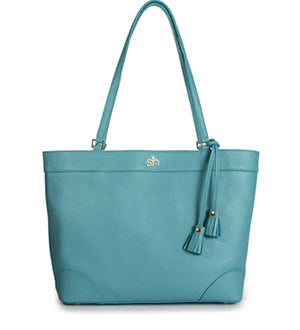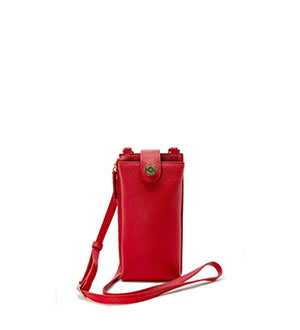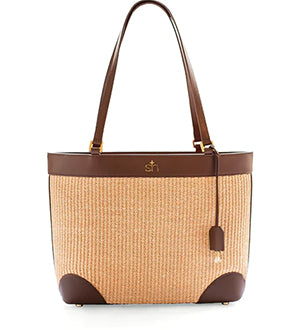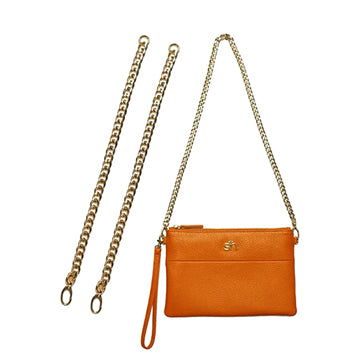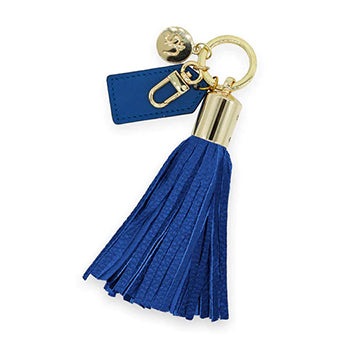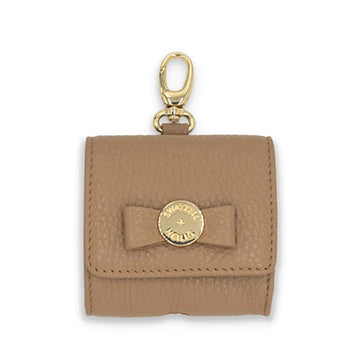A Complete Guide to Understanding the Durability of Italian Leather

Quick Listen:
Italian leather is often regarded as the gold standard in luxury goods. Whether you're looking for a high-end handbag, a stylish jacket, or a sleek pair of shoes, chances are, the leather comes from Italy. Renowned for its superior quality, aesthetic appeal, and unmatched durability, Italian leather has been a staple in fashion, furniture, and accessories for centuries.
But what exactly makes Italian leather so durable and enduring? In this comprehensive guide, we'll delve into the unique qualities of Italian leather, the meticulous craftsmanship behind its production, and the factors that contribute to its long-lasting nature. Additionally, we'll explore the tanning processes, provide maintenance tips, and teach you how to identify high-quality Italian leather.
1. The Craftsmanship Behind Italian Leather
Italian leather isn't just a material; it's a product of centuries of craftsmanship. The country's deep-rooted tradition of leatherworking, passed down from generation to generation, ensures that each piece is crafted with meticulous attention to detail. Italian artisans are known for their skill, precision, and dedication to quality, which is why leather goods from Italy are sought after worldwide.
A significant aspect of Italian leather craftsmanship lies in the small, family-owned tanneries that continue to operate in the heart of Italy's leather districts. These tanneries, particularly those in Tuscany, are known for using time-honored techniques passed down through the ages. The expertise of Italian craftsmen ensures that leather is treated to perfection, resulting in a material that ages gracefully, developing a unique patina over time.
2. The Tanning Process: A Vital Step in Durability
One of the key factors contributing to the durability of Italian leather is the traditional tanning process, which ensures the material is both supple and resilient. Unlike mass-produced leather, Italian leather undergoes a meticulous vegetable tanning process, which involves soaking the leather in natural tannins derived from plant-based substances like oak, chestnut, and mimosa.
This vegetable tanning method typically takes weeks, sometimes even months, to complete. The long, slow process allows the tannins to deeply penetrate the fibers of the leather, creating a more robust and durable material. Additionally, vegetable tanning is an eco-friendly option, as it avoids the use of harmful chemicals, making it a sustainable choice for both the environment and the consumer.
Unlike chrome tanning, which is faster and more cost-effective but can lead to leather that's less resilient, vegetable-tanned leather from Italy is known for its rich, natural color and incredible durability. The material becomes stronger with age, developing a distinct patina that adds character and beauty over time.
3. Characteristics of High-Quality Italian Leather
Several distinctive qualities set Italian leather apart from other types of leather, ensuring its longevity and timeless appeal. Here are some of the primary characteristics that contribute to its durability:
- Thickness and Density: Italian leather is known for its thickness and density, making it a highly durable material. The thickness allows the leather to hold its shape and resist wear and tear, while its density ensures that it can withstand pressure and stress without easily showing signs of damage.
- Smooth Texture: The texture of Italian leather is typically smooth, rich, and supple. This softness and smoothness contribute to the overall comfort and luxurious feel of leather goods. Furthermore, the smooth texture allows the leather to absorb oils and moisture, contributing to its natural aging process and enhancing its durability.
- Color Retention: High-quality Italian leather retains its color over time, even with frequent use. The vegetable tanning process helps preserve the leather's natural hues, ensuring that it doesn't fade or lose its luster as quickly as other types of leather.
- Breathability: Italian leather is breathable, which helps prevent moisture buildup. This characteristic helps avoid mildew, mold, and other forms of degradation that might affect leather in more humid environments. The material's ability to breathe is essential in ensuring that leather goods remain fresh and durable.
4. Maintenance Tips for Ensuring Longevity
To ensure the longevity of your Italian leather goods, proper care and maintenance are essential. Fortunately, maintaining Italian leather isn't as complicated as it may seem. With a few simple steps, you can preserve the beauty and durability of your leather items for years to come.
- Clean Regularly: Dirt, dust, and grime can accumulate on leather surfaces, so it's important to clean them regularly. Use a soft, dry cloth or a microfiber towel to gently wipe away dirt and debris. For deeper cleaning, use a leather cleaner that's specifically designed for vegetable-tanned leather. Avoid harsh chemicals that can strip away the natural oils of the leather.
- Condition the Leather: Over time, leather can become dry and lose its natural oils. To prevent cracking or stiffness, it's essential to condition your leather goods. Use a high-quality leather conditioner or cream designed for vegetable-tanned leather. Apply it sparingly, rubbing the product into the leather with a soft cloth to restore moisture and keep it supple.
- Protect from Water: While Italian leather is naturally resistant to water to a certain extent, it's still essential to protect your leather items from excessive exposure to moisture. If your leather gets wet, gently blot it with a clean, dry cloth and allow it to air dry away from direct heat sources. Avoid soaking the leather, as it can damage the fibers and alter its color.
- Store Properly: When not in use, store your leather goods in a cool, dry place. Avoid leaving them exposed to direct sunlight, as this can cause the leather to fade. Use dust bags or boxes to protect your leather items from scratches or dents. For leather furniture, regularly dust the surface to keep it looking pristine.
5. How to Identify High-Quality Italian Leather
Knowing how to identify high-quality Italian leather is essential for anyone looking to invest in leather goods. Here are a few tips to help you spot genuine Italian leather:
- Smell: Real Italian leather has a natural, earthy smell that is distinctive and pleasant. Synthetic leathers often have a chemical or plastic odor, while low-quality leather may have a harsh or artificial scent.
- Texture: High-quality Italian leather feels soft and smooth to the touch. It should have a slight natural grain, with no rough or uneven patches. When you press the leather, it should give slightly but bounce back to its original shape.
- Look for Certification: Reputable Italian leather brands often provide certification or labels indicating the quality and origin of the leather. Look for the Made in Italy label or certifications from recognized Italian leather consortiums to ensure authenticity.
- Price: While price isn't always an indicator of quality, be cautious of leather goods that are priced significantly lower than others. High-quality Italian leather requires a significant amount of time and skill to produce, so items made from such leather tend to come at a premium price.
6. The Timeless Appeal of Italian Leather
The durability of Italian leather is one of the primary reasons for its timeless appeal. As leather ages, it develops a rich, unique patina that enhances its visual character. This aging process ensures that Italian leather items are not only durable but also develop an individuality that synthetic or mass-produced leathers cannot replicate.
Whether it's a leather jacket that looks better with each wear, a handbag that only improves with age, or a piece of furniture that exudes luxury, Italian leather is a material that stands the test of time. Its ability to improve with age, combined with its durability, makes it a valuable investment for anyone seeking both quality and beauty in their leather goods.
Elegance in Durability
In conclusion, the durability of Italian leather is a result of a combination of factors: expert craftsmanship, traditional tanning methods, superior materials, and proper care. When properly maintained, Italian leather goods can last for decades, developing a unique patina that adds to their beauty and charm. By understanding the unique characteristics of Italian leather and following the right care practices, you can enjoy your investment for years to come.
The next time you purchase a leather item, you'll have the knowledge to identify the finest Italian leather and appreciate its lasting beauty and durability. Whether it's for fashion, furniture, or accessories, Italian leather remains an unmatched symbol of quality, craftsmanship, and timeless elegance.
You may also be interested in: How Italian Leather is Made: A Step-by-Step Guide Swatzell + Heilig
Indulge in the craftsmanship of attainable luxury Italian leather. Exclusive designs and impeccable functionality, handcrafted to last a lifetime. Shop the Swatzell + Heilig's fashion collection now!
Powered by flareAI.




